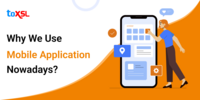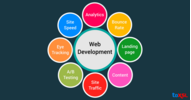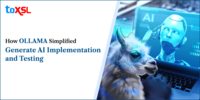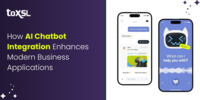- Jul 08, 2025
Share this post on:
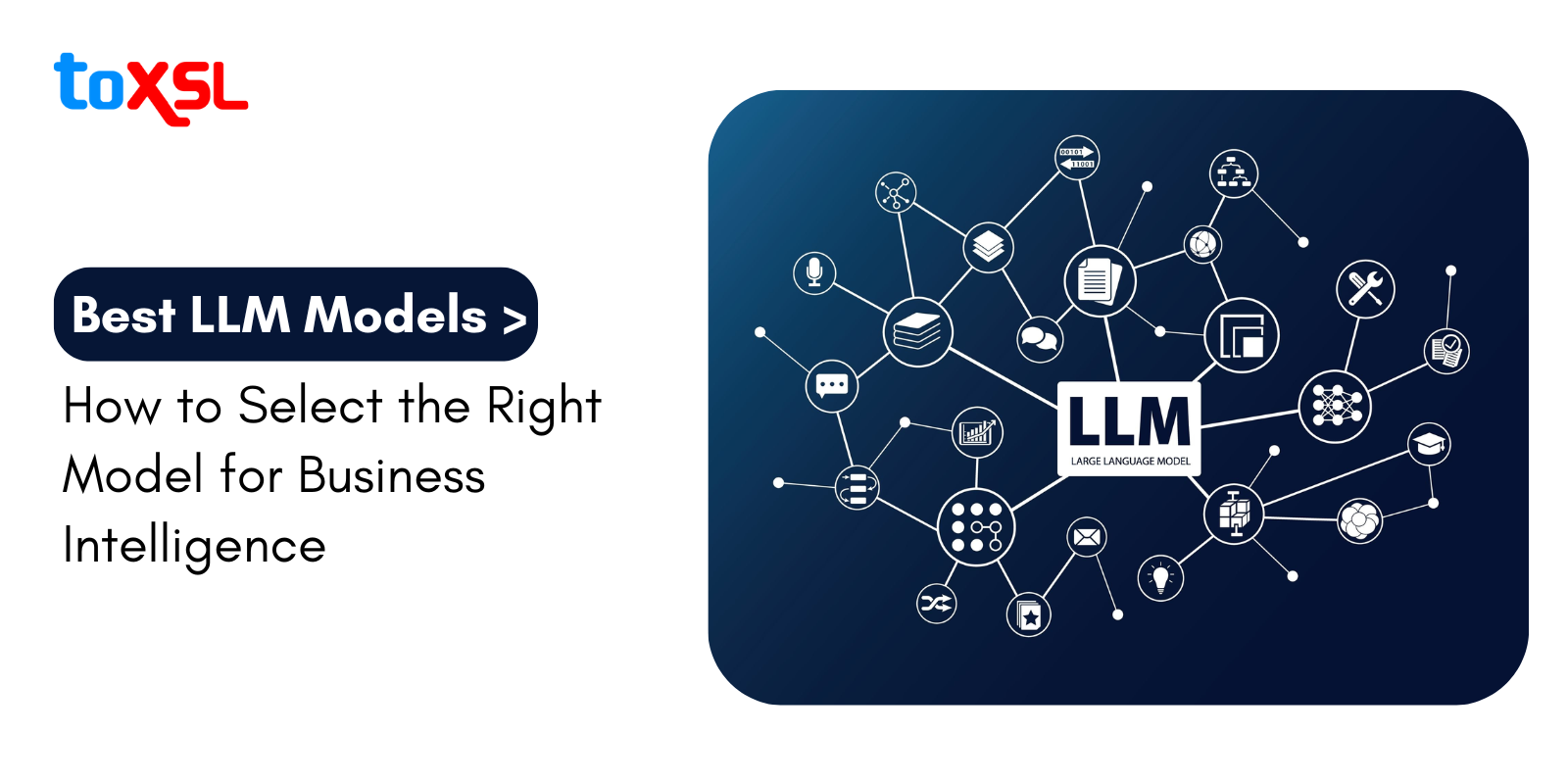
According to research, the LLM market is estimated to reach $30 billion by 2032, growing at a CAGR of 29.9%. Selecting the right Large Language Model (LLM) for business intelligence (BI) is a critical decision in 2025, given the rapid evolution and diversity of available models. LLMs have become indispensable in enhancing data analysis, automating workflows, generating insights, and enabling natural language interactions with complex datasets.
This comprehensive blog will explore the best LLM models available today, their unique strengths, and provide a detailed framework to choose the right LLM for your business intelligence needs.
How to Choose the Right LLM Model for Business
Here are a few factors that are important to consider while choosing the right LLM model for your business.
Performance and Accuracy: Businesses use LLMs to deliver accurate, consistent, and meaningful outputs. Ensure to look at the performance metrics such as perplexity for text generation or F1 scores for classification tasks. Also, a few standardized tests, e.g., GLUE, SuperGLUE, MMLU, give you better results that can help you compare models objectively. Hence, while choosing the LLMs, consider how well the model adapts to your domain-specific language or technical context.
Align with Business Goals: Start by defining the primary use case for the LLM. Before choosing the model, ask yourself a few questions, like are you building a conversational AI? For what domain are you building the AI? As no model is all-in-one, different models excel in different tasks. Hence, matching the model’s strengths to your business objectives is important for success.
Cost and Scalability: Ensure to consider the scale of operation. Do you need to handle thousands or millions of queries? Before choosing any model, look for its scalability and your budget. Startups and SMEs should focus on models that offer a good balance between cost and scalability. However, open-source models might be a cost-effective alternative if they meet your needs.
Customization and Fine-tuning: Ensure that you look for the models that can be fine-tuned on domain-specific datasets, as generic models might not meet the customized business needs. With that, technologies including LoRA (Low-Rank Adaptation) can make fine-tuning more efficient. Customization ensures that the model “speaks your industry’s language”, whether medical, legal, or financial.
Integration with Existing Systems: The LLM model you choose must be able to integrate with your current tools, platforms, and workflows. Robust APIs and developer support are important for smooth deployment and minimum disruption. Further, an efficient integration fastens return on investment and operational adoption.
Multi-modal Capabilities: With multimodal AI, computers can understand both words and pictures together. This means they can do things like explain what’s in a photo or read documents that have text and images. This is helpful for businesses that use different kinds of content, like marketing, art, or healthcare, where doctors look at scans and notes. Using AI that understands both text and images can help save time, give better answers, and create new ideas that only text or only pictures can’t. So, if your business works with many types of information, choosing this kind of AI is a smart choice.
How LLMs Can Benefit Your Business Operations?
Large Language Models (LLMs) are evolving day by day. The initial versions of LLMs were likely to generate irrelevant content with limited contextual understanding. But, today, LLMs such a GPT-4 are capable of understanding various statements and contexts to develop logical and relevant responses:
Enhanced Customer Support: Large Language Models help businesses automate client interactions. With LLMs, you can decrease response time and improve customer satisfaction, and allow support staff to concentrate on resolving complicated issues.
Customized Marketing Campaigns: LLMs help businesses create tailored marketing messages, emails, and recommendations. Businesses can boost their efficiency, increase conversion rates, and improve customer loyalty by selecting the right LLM model.
Automated Document Processing: LLMs can easily extract, evaluate, and summarize data from emails, reports, and documents. This helps businesses streamline operations, decrease human error, and speed up decision-making processes for businesses handling massive amounts of data.
Improved Employee Training: Interactive training programs using advanced language technology can help companies offer ongoing learning opportunities to their employees. These training tools give workers the knowledge and skills they need to do their jobs well and keep up with new technologies.
Top LLM Models
However, there are a lot of LLM models that businesses can choose from. But here are the top LLM models:
ChatGPT: Developed by OpenAI, ChatGPT is a generative AI chatbot that uses natural language processing to develop humanlike conversations with users and develop content, including articles, text summaries, advice, and more. It acts as a personal assistant for task management and businesses.
Copilot: Copilot, created by GitHub, is a conversational AI-powered assistant that enhances productivity and streamlines workflows by offering contextual assistance, automating routine tasks, analyzing data, and helping you make faster and more informed decisions
GPT-4o: GPT-4o is a multimodal and multilingual generative pre-trained transformer developed by OpenAI. The “o” in GPT-4o stands for omni, highlighting that GPT-4o is a multimodal AI model that has sound and vision capabilities. It is great for research assistance, summarization, and has enhanced natural language understanding for multi-turn conversations.
Gemini: Developed by Google DeepMind, Gemini is Google’s large language model (LLM), a family of Multimodal AI models. It is designed to process multiple modalities such as audio, images, code, and text. It is used for advanced reasoning, Healthcare AI for diagnostic and patient data analysis, and AI-based business solutions for decision-making and automation.
LLaMA 3: LLaMA 3, Large Language Model Meta AI 3, is an open-source large language model development service developed by Meta, trained on massive text data. It understands and responds to language, making tasks such as writing, creative content, translation, and answering queries in an easier and informative way. It helps in the fast deployment of customized AI and fine-tuning of domain-specific apps, including finance and healthcare.
BERT: BERT, Bidirectional Encoder Representation from Transformer, developed by Google, is a machine learning framework for natural language processing. It is used for SEO and query understanding, natural language understanding tasks such as sentiment analysis, text classification, and entity recognition.
LaMDA: Developed by Google, LaMDA stands for Language Model for Dialogue Applications, focused on making interactions with technology naturally and intuitively. Also, it is used by virtual assistants and chatbots for personal use. The model is trained using a huge dataset including documents, dialogs, and more, which comprises 1.56 trillion words.
Gemma: Gemma, developed by Google DeepMind, is a state-of-the-art open model developed to create the Gemini models. It helps developers develop ethical AI apps in customer services and support, and create conversational interfaces for apps and platforms.
Final Words:
The landscape of Large Language Models offers unprecedented opportunities for business intelligence, but selecting the right model requires a strategic approach.
By carefully evaluating effectiveness, cost, customization, integration, task fit, multimodal abilities, robustness, and compliance, businesses can harness the full power of LLMs to transform their intelligence workflows, drive innovation, and maintain competitive advantage. If you want tailored advice or a detailed comparison for your specific BI project, feel free to contact our team.




